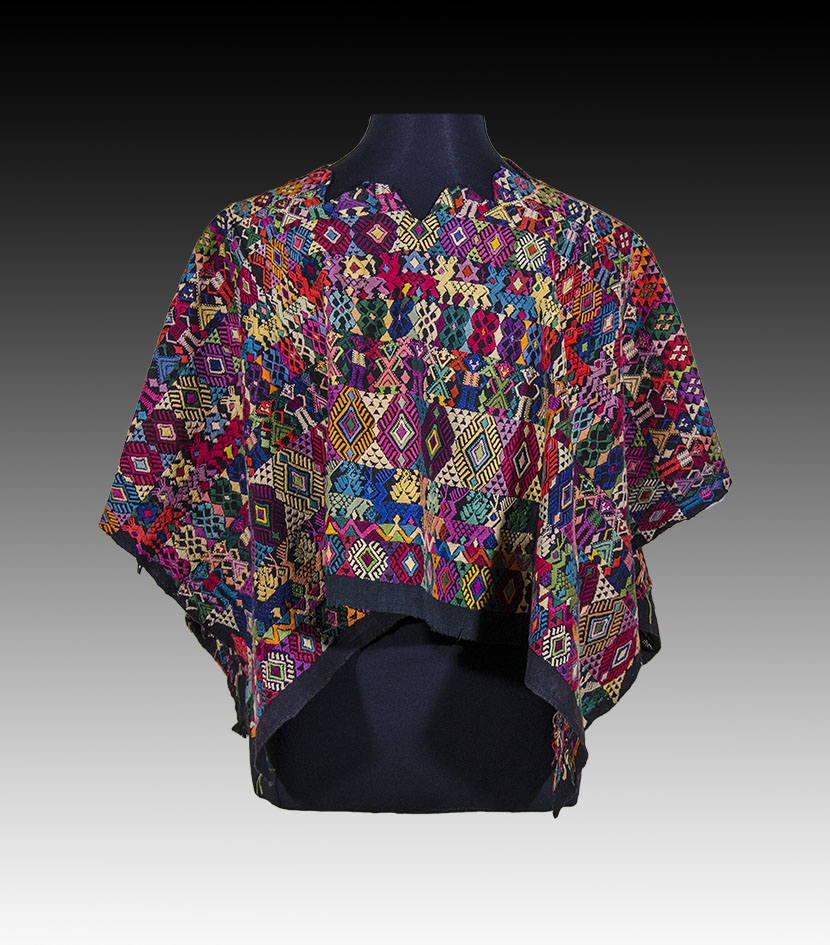BACK TO TOP
TEXTILES
Mayan Huipil.
Purulhá, Baja Verapaz, Poqomchi ethnic group'. Guatemala. Second quarter of the 20th century.
This textile piece has been woven on a backstrap loom, in three very fine black cotton yarns, on a four-edge warp face. The ornamentation is extremely profuse, both on the covered surface, as well as in the colors and diversity of the figures. We can see transversal streets that run along the entire length of the garment, “drawn” using the brocade technique of floating reverse threads. Measures. Length: 1.00 m / 39.37 in. Width: 95 cm / 37.40 in.
Each street repeats a motif: representation of the sun, human couples, animals and plants, and geometric figures. We can see a narrow street with a zigzag pattern whose complexity does not match the others; It is due to the fact that it marks the border between front and back (at shoulder height) off-center with respect to the axis, to accompany the female anatomy. The opening of the mouth, cut out once the clothes have been joined, marks an eight-pointed star symbolizing the sun.
Purulhá is a town established on the banks of the El Mezcal river, the only one of the Poqomchi ethnic group in the Baja Verapaz district. It owes its name to the words Purul (jute de) and Ha (water), because in the El Mezcal river there are colonies of a freshwater snail called jute.
Bibliography:
Barbara Konoke from Aratoon: Indigenous Costumes of Guatemala. Guatemala, Ed. Galería Guatemala, 2007, Year 13, No. 37, p. 25.
S.O-XIV-DOM
Are you interested in selling some works?
Send us an email briefly indicating
which works you intend to put on sale, and we will respond. click here
Subscribe to our newsletter to be updated.
Check our Newsletters